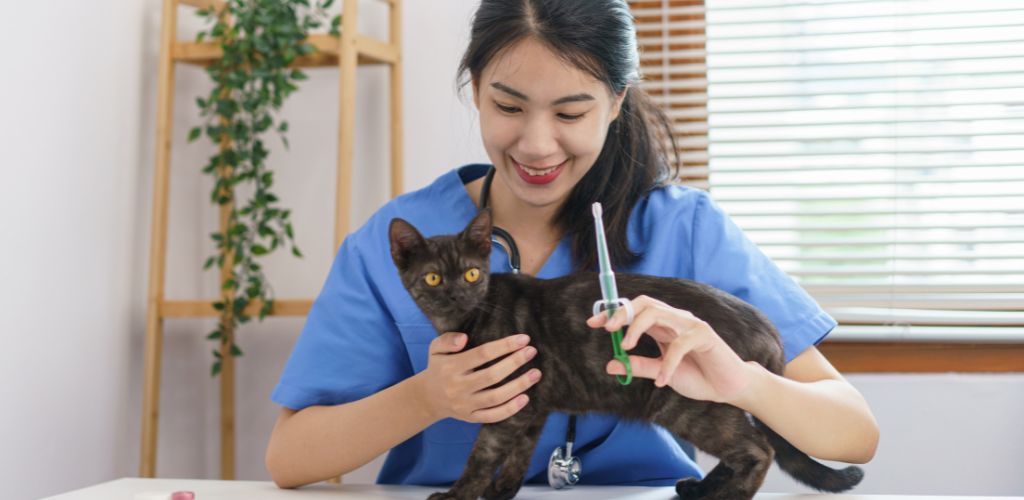Next Generation Sequencing (NGS) has emerged as a transformative tool in veterinary diagnostic and clinical medicine, revolutionizing the way Certainly, here’s a more organized version:
Next Generation Sequencing (NGS) has transformed veterinary diagnostic and clinical medicine, offering unprecedented capabilities compared to traditional DNA sequencing methods. This technology encompasses various modern sequencing approaches, providing researchers with faster, more powerful, and cost-effective tools.
NGS in Veterinary Medicine:
NGS is a game-changing opportunity in veterinary medicine due to its speed, power, and cost-effectiveness. Its hypothesis-free metagenomics strategy allows simultaneous detection of mixed infections and identification of novel pathogens directly from clinical samples, eliminating the need for prior knowledge of the pathogens.
Application at Iowa State University Veterinary Diagnostic Laboratory:
The Veterinary Diagnostic Laboratory at Iowa State University is at the forefront of utilizing NGS. During critical events like the porcine epidemic diarrhea and infections of deltacoronavirus and Senecavirus A, the dedicated NGS section proved invaluable. Researchers swiftly and accurately obtained answers, utilizing whole genome sequencing to understand the genetic relationships of identified strains to historical strains of the diseases.
Advancements in Veterinary Diagnostics through Next-Generation Sequencing
Recent developments in veterinary diagnostics leverage the power of Next-Generation Sequencing (NGS), offering a comprehensive approach to identify emerging pathogens and characterize variants of endemic viruses. This integration of NGS with in situ hybridization (ISH) provides a novel diagnostic platform for investigating swine diseases.
NGS and ISH Integration:
The combination of NGS and ISH proves to be a powerful diagnostic approach. While NGS identifies and characterizes microbial DNA within a sample, ISH complements this by providing a morphological context. ISH, capable of rapidly detecting pathogens in tissue samples without the need for specific antibodies, aids in establishing the relationship between the detected pathogen and histological lesions.
Molecular Diagnostics in Veterinary Medicine:
Molecular diagnostics, employing techniques such as Polymerase Chain Reaction (PCR) and NGS, play a crucial role in veterinary medicine. PCR acts as a molecular magnifying glass, amplifying DNA or RNA to pinpoint genetic defects and identify infectious diseases. NGS, in conjunction with PCR, provides a comprehensive genetic analysis.
Prospects and Challenges in Veterinary NGS:
A chapter in Springer explores the current and prospective applications of massive parallel sequencing technologies in veterinary medicine. It discusses the opportunities and challenges associated with NGS, emphasizing its potential impact on disease control and management.
Key Advantages of NGS:
- Rapid and Accurate Answers: NGS enables researchers to swiftly respond to disease outbreaks, providing quick and accurate information.
- Genomic Epidemiology: Whole genome sequencing offers insights surpassing traditional epidemiology, helping track the origin and trajectory of viruses.
Conclusion:
In conclusion, NGS represents a revolutionary tool in veterinary diagnostics. Its speed, efficiency, and ability to detect mixed infections make it an invaluable asset in managing and understanding disease outbreaks in animal populations. The integration of NGS and ISH presents a promising avenue for advancing veterinary diagnostics, providing a holistic understanding of emerging pathogens. Molecular diagnostics, particularly through PCR and NGS, continue to revolutionize the field, offering precise genetic insights for disease detection and management.
References:
- Next Generation Sequencing: A Game Changer in Veterinary Diagnostic and Clinical Medicine. https://www.vetmed.iastate.edu/article/next-generation-sequencing-game-changer-veterinary-diagnostic-and-clinical-medicine
- Sequencing of Anima. Viruses: Quality Data Assurance for NGS. https://virologyj.biomedcentral.com/articles/10.1186/s12985-019-1223-8
- Chapter – Next-generation Sequencing in Veterinary Medicine. https://benthamscience.com/chapter/19875
- Next-Generation Sequencing Coupled With in situ Hybridization for Swine Emerging Pathogens. https://www.frontiersin.org/articles/10.3389/fvets.2019.00403/full
- Recent Technological Advancements in Veterinary Medicine – VETport. https://www.vetport.com/technology-helping-veterinary-medicine
- Next-Generation Sequencing in Veterinary Medicine: How Can It Impact Disease Control and Management? – Springer. https://link.springer.com/protocol/10.1007/978-1-4939-2004-4_30




